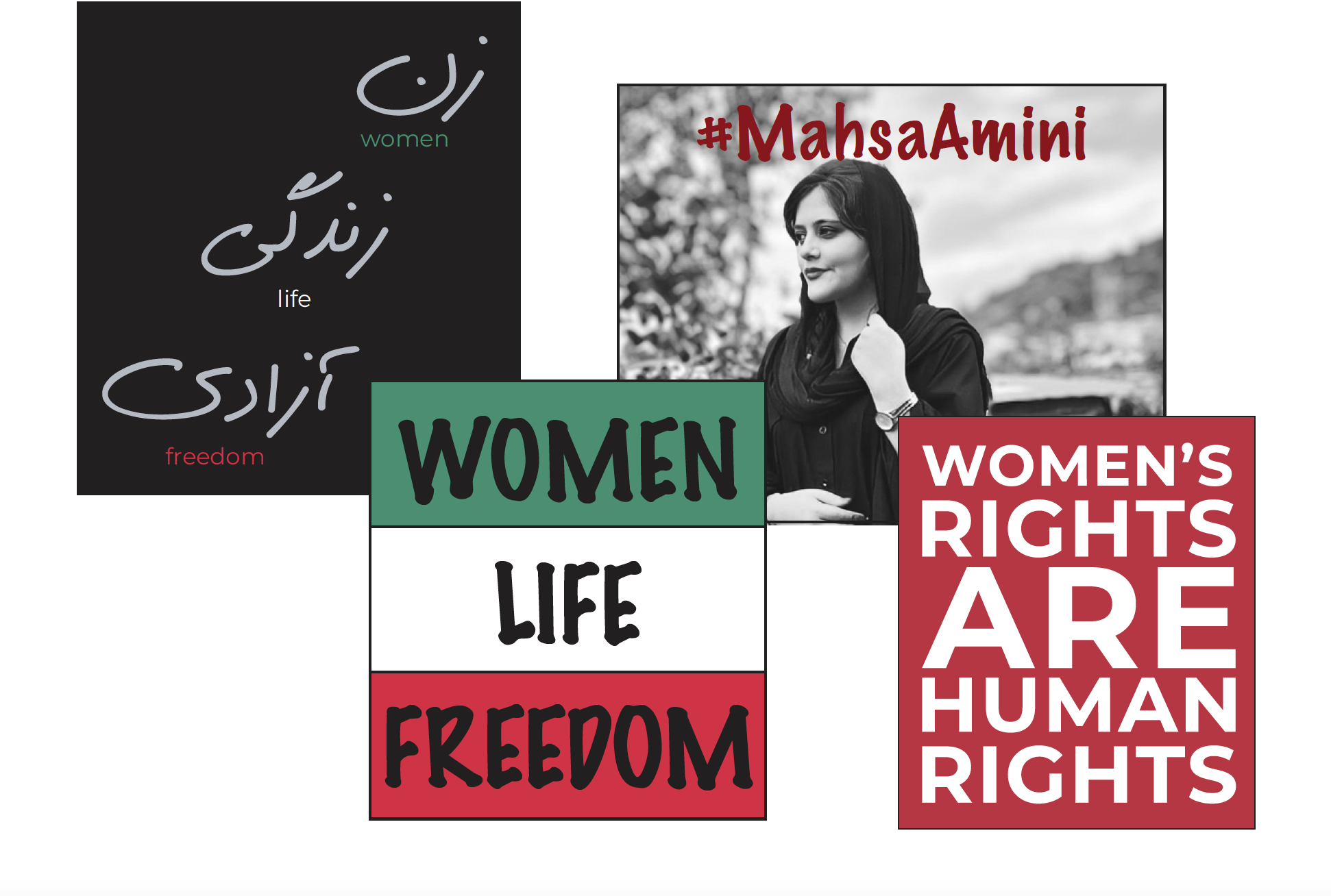Woman, Life, Freedom
DISCUSSINg #mahsaaminI
AND FEMINIST MOVEMENTS
IN THE CLASSROOM

GOALS AND OBJECTIVES
Using trauma-informed approaches, this learning module is intended to equip high school teachers with the tools to engage in guided discussions about the #WomanLifeFreedom uprisings in Iran, focusing on:
Empowering students and preventing the harmful impacts of retraumatization and vicarious trauma.
Engaging students in a safe way that encourages self-expression and prevents developing harmful self-perception.
Providing academically credible and accessible content to prevent misinformation.
How issues of gender, ethnicity, and religion intersect with regards to Mahsa (Jina) Amini and the demonstrations in Iran.
Introducing the #WomanLifeFreedom movement and forefronting the role of feminism in transnational activism.
*Some materials may require subscriptions for full access. Check with your school’s librarian to see if your school has access for materials that may have limited visibility.*

preparation
Start Class with a 5 Minute Impulse Check // Mindfulness Practice
Body Scan: guided audio and instructions.
“It’s Ok” Exercise // Healthy Reminders
It’s OK
to not know — sometimes you may not know what to say.
It’s OK
to feel before you react — sometimes we may feel pressured to respond.
It’s OK
to be tired — take breaks.
It’s OK
to take care of yourself — care is at the center of any social movement.
Creating Brave Space to Talk About Social Movements // Sharing Space
• Begin by collectively creating a community agreement for the conversation:
Ex: Agreeing to lean into compassion and understanding.
Ex: Saying “ouch” if someone says something that hurts — provide the space to own your feelings. Saying “oops” and genuinely apologize for the ways your intention did not match your impact.
Give students time to understand how they feel safest participating. Be mindful that some students may be facing security risks.
Use silent signals for anyone who prefers non-verbal communication.
Incorporate intermittent journaling time so students can reflect and process their emotions.
Consider using the Harkness Method to help facilitate classroom discussions using these resources.
CURRICULUM 1:
INTRODUCTION TO
#WOMaNLIFEFREEDOM
Background Information
In-Class Content
Discussion Topics
What started the #WomanLifeFreedom movement?
What did you think “Woman, Life, Freedom” means and what are the roots of this phrase?
What demands are being voiced?
How are people showing up in the digital space vs. physical space?
What roles do Gen Z and women have in this movement?
Artivist in Training
Art — learn about the role of art in the #WomanLifeFreedom and #MeToo movements.
Create a banner, slogan, or stencil that you believe represents a movement that is personal to you.


CURRICULUM 2:
THE INTERNATIONAL FIGHT
FOR WOMEN’S RIGHTS
Background Information
In-Class Content
Discussion Questions
What does bodily autonomy mean?
Muslim women have protested in India, France, and Switzerland against bans on the hijab. How do these protests overlap with the #WomanLifeFreedom movement in Iran?
What does it mean for bodily autonomy when men protest alongside women? What should be, or is, the role of men in struggles for bodily autonomy?
Many global movements are led by the most marginalized populations. What connections can you draw between #WomanLifeFreedom, #MeToo, and #BlackLivesMatter?
Artivist in Training
Music — reflect on Freedom Songs that became anthems during the Civil Rights movement and the meaning of the song Baraye by Shervin Hajipour.
Write song lyrics or a poem about a cause that matters to you.

INSPIRING MINDFULNESS
// AFTER CARE

Conclude the discussion with a 5 Senses Grounding Technique.
Lean into closure activities that allow for joy in addition to a greater range of student responses.
Offer local mental health resources for students who may need extra support.

